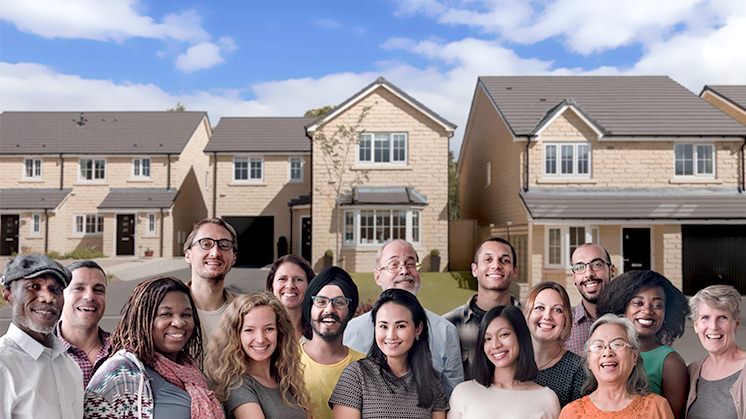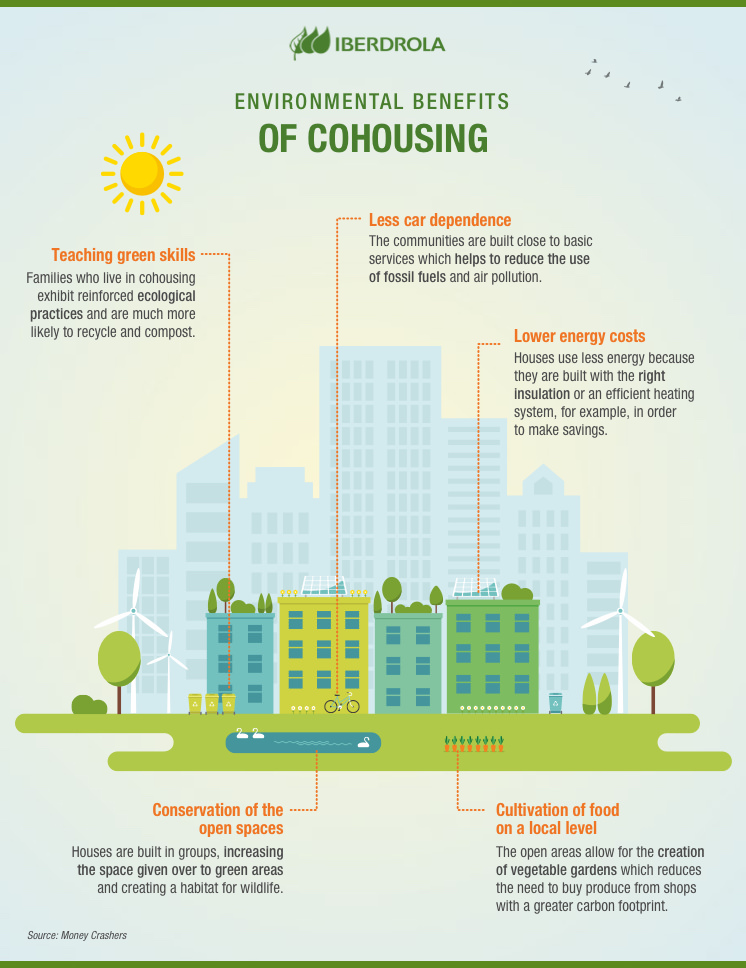Collaborative housing (cohousing)
Cohousing, the sustainable model for collaborative housing
We share cars to travel and also a house to live in as well. Cohousing or collaborative living, a concept prior to the era of sharing, is a horizontal property management model, non-speculative, sustainable and popular in the US or Nordic countries where people live in a community and share areas and basic services.

Shortage of land, rising prices, wage freezes and job insecurity are phenomena common to all parts of the world that make it difficult or impossible in many cases to achieve a universal right: access to decent housing. This trend could lead to an alarming scenario by 2030, when the United Nations Organisation (UN) predicts that 96,000 new homes per day will be required to house the 3 billion people who will need a home — 40% of the global population.
What is cohousing?
Collaborative living — or cohousing — is the social answer to a problem that affects above all vulnerable groups such as the young and old. The system was born in Denmark in the '60s and combines different architectural solutions with the principles of community living, cooperation and shared ownership.
In cohousing a group of individuals come together to live in a community based on a self-managed common housing project. Amongst themselves they design the space according to the needs of the group with independent homes and shared zones such as the kitchen, dining room and green areas. In addition, they share essential services such as cleaning, gardening and childcare.
Cohousing usually begins with a small group of people with similar interests, aims and philosophy of life. The nucleus of this intentional community starts by establishing the bases of the community living and leaves other things for later when the definitive group has been configured, such as the organisational model, the actual options of the project and the financial formula to make it happen.
Cohousing for the elderly and other groups
The World Economic Forum (WEF) acknowledges the social, financial and environmental benefits of collaborative housing, a more inclusive and sustainable model that facilitates living together, cooperation and the responsible use of natural and energy resources. Community living is also an option to combat loneliness which affects, above all, the elderly and those who suffer discrimination, as happens in some countries with LGTB groups.

Cohousing for the elderly is one of the most popular, but not the only one since this model is also perfect for groups of friends who wish to live together and set up a common project, people with limited resources, a disability or those undergoing chronic treatments, groups with specific needs in terms of space, light or sound, etc.
Community living: Ways to achieve it
The most common property method for cohousing is a housing cooperative with right of use. This means that the buildings belong to the community, but that their occupants have the right to live in them and use the communal areas for life. This lifelong usufruct can be left in a will or sold through the cooperative, thereby making moving easy.
Usually, cohousing communities acquire some land and build, but not all of them do it in that way. Some rent empty properties and reach agreements with the owners to live in them. In both cases the cooperative bears all the costs arising from the project — such as the mortgage, the rent and the maintenance of the areas — with contributions from the partners.
There are also cohousing developers, like the German Medici Living Group with over 35 projects built in Europe and the US, or the American WeLive, Common and Ollie. At an international level there are models for collaborative living and architectural trends that vary according to country and reflect the needs of each society:
Denmark
Most common is cohousing with centralised communal services in a single block which may be separate or may be built into the other buildings.
Spain
Most common is cohousing for the elderly with homes no bigger than 80 m2 equipped with a room, kitchen and bathroom.
United States
Community life normally takes place in a separate building away from the others.
Mexico
Cohousing is not as common in this country as in others, but is beginning to take off as a living option for the elderly.
United Kingdom
Most of the communities are mixed, varying in size between 10 and 40 homes, and the communal use areas are all together in a separate building.
Sweden
Usually the common areas are on one or more floors in different height blocks.
Ecovillages as an ecological alternative
'Megacities', a future challenge
Eco-neighbourhoods: a future commitment for sustainable cities
Discover the world's most sustainable cities




